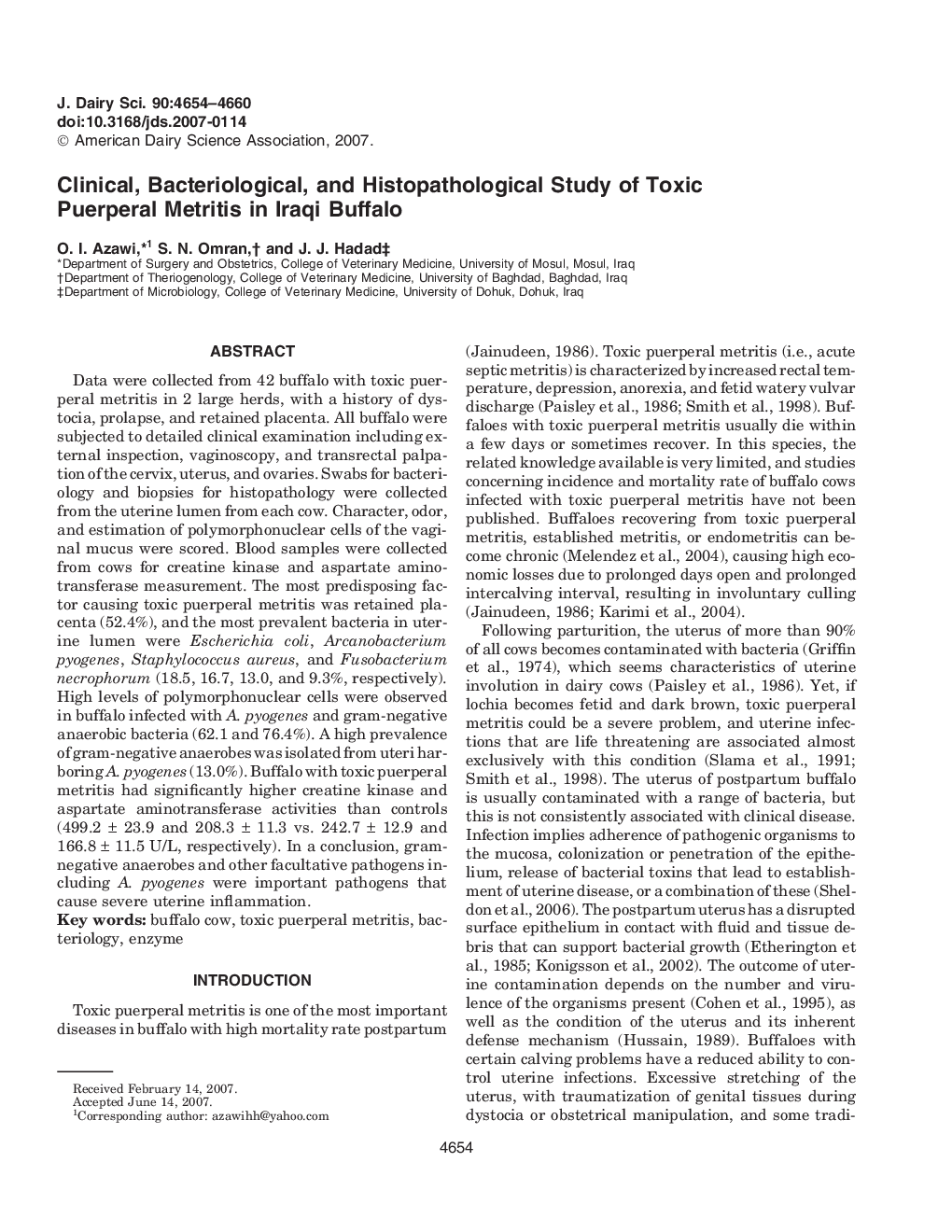| Article ID | Journal | Published Year | Pages | File Type |
|---|---|---|---|---|
| 2440284 | Journal of Dairy Science | 2007 | 7 Pages |
Abstract
Data were collected from 42 buffalo with toxic puerperal metritis in 2 large herds, with a history of dystocia, prolapse, and retained placenta. All buffalo were subjected to detailed clinical examination including external inspection, vaginoscopy, and transrectal palpation of the cervix, uterus, and ovaries. Swabs for bacteriology and biopsies for histopathology were collected from the uterine lumen from each cow. Character, odor, and estimation of polymorphonuclear cells of the vaginal mucus were scored. Blood samples were collected from cows for creatine kinase and aspartate amino-transferase measurement. The most predisposing factor causing toxic puerperal metritis was retained placenta (52.4%), and the most prevalent bacteria in uterine lumen were Escherichia coli, Arcanobacterium pyogenes, Staphylococcus aureus, and Fusobacterium necrophorum (18.5, 16.7, 13.0, and 9.3%, respectively). High levels of polymorphonuclear cells were observed in buffalo infected with A. pyogenes and gram-negative anaerobic bacteria (62.1 and 76.4%). A high prevalence of gram-negative anaerobes was isolated from uteri harboring A. pyogenes (13.0%). Buffalo with toxic puerperal metritis had significantly higher creatine kinase and aspartate aminotransferase activities than controls (499.2 ± 23.9 and 208.3 ± 11.3 vs. 242.7 ± 12.9 and 166.8 ± 11.5 U/L, respectively). In a conclusion, gram-negative anaerobes and other facultative pathogens including A. pyogenes were important pathogens that cause severe uterine inflammation.
Keywords
Related Topics
Life Sciences
Agricultural and Biological Sciences
Animal Science and Zoology
Authors
O.I. Azawi, S.N. Omran, J.J. Hadad,
